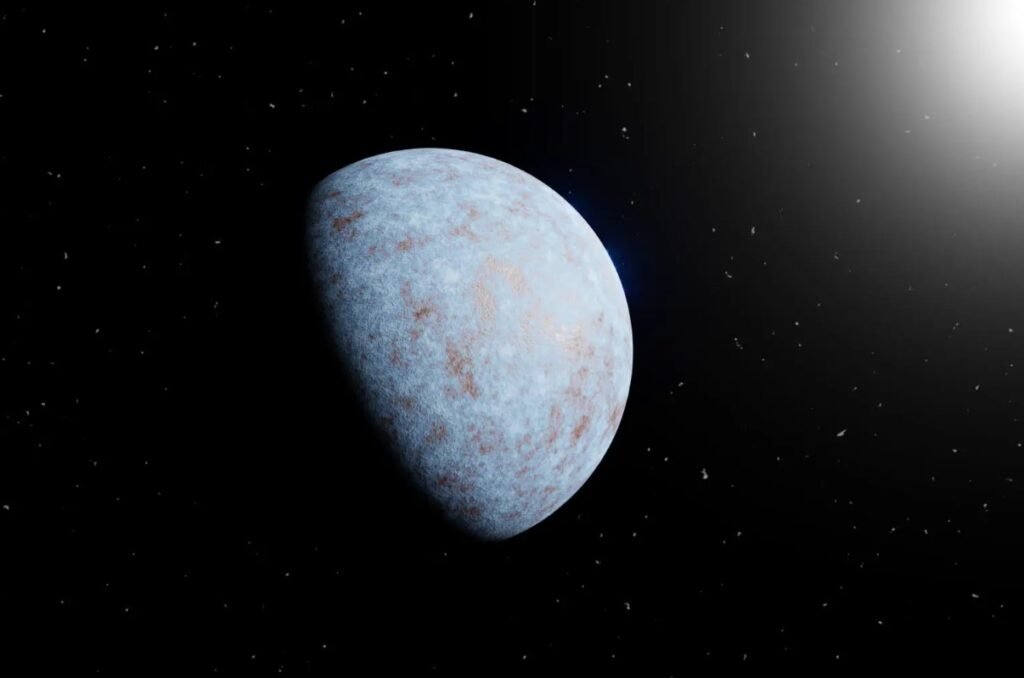A team of international astronomers has found a new exoplanet that defies the conventional models of planet formation. The planet, named TOI-1853b, is about the size of Neptune but has a density higher than steel. The researchers believe that this unusual composition could be the result of a giant planetary clash that stripped away most of the planet’s lighter elements.
TOI-1853b: An Extreme Planet with Unexpected Characteristics
TOI-1853b was detected by the Transiting Exoplanet Survey Satellite (TESS), a NASA mission that searches for planets around nearby stars by observing their periodic dips in brightness. The planet orbits a sun-like star about 1,000 light-years away from Earth, completing one revolution every 18 hours. The planet’s mass is almost twice that of any other similar-sized planet known, and its density is about 7.5 grams per cubic centimeter, which is comparable to some metals on Earth.

“This planet is very surprising! Normally we expect planets forming with this much rock to become gas giants like Jupiter which have densities similar to water,” said Jingyao Dou, a postgraduate student and co-author of the study from the University of Bristol. “TOI-1853b is the size of Neptune but has a density higher than steel. Our work shows that this can happen if the planet experienced extremely energetic planet-planet collisions during its formation.”
A Possible Scenario for the Formation of TOI-1853b
The researchers suggest that TOI-1853b could be the result of a violent collision between two larger planets that had more water and atmosphere. Such a collision would have removed some of the lighter elements and left behind a rocky core with a thin layer of gas. The team used computer simulations to model different scenarios of planetary impacts and found that the initial planetary body would likely have needed to be water-rich and suffer an extreme giant impact at a speed of greater than 75 kilometers per second in order to produce TOI-1853b as it is observed.
“We have strong evidence for highly energetic collisions between planetary bodies in our solar system, such as the existence of Earth’s Moon, and good evidence from a small number of exoplanets,” said Dr. Phil Carter, a senior research associate and co-author of the study from Bristol’s School of Physics. “We know that there is a huge diversity of planets in exoplanetary systems; many have no analog in our solar system but often have masses and compositions between that of the rocky planets and Neptune/Uranus (the ice giants).”
A New Insight into the Diversity and Evolution of Planetary Systems
The discovery of TOI-1853b provides new evidence for the prevalence of giant impacts in the formation of planets throughout the galaxy. This discovery helps to connect theories for planet formation based on the solar system to the formation of exoplanets. The discovery also challenges the conventional classification of planets based on their size and mass, as TOI-1853b does not fit into any existing category.
“This planet is an extreme example of how diverse exoplanets can be,” said Luca Naponiello, the lead author of the study from the University of Rome Tor Vergata. “It shows that we still have a lot to learn about how planets form and evolve in different environments.”
The study was published in the journal Nature on August 31, 2023. The team plans to conduct further observations of TOI-1853b to attempt to detect any residual atmosphere and examine its composition.
